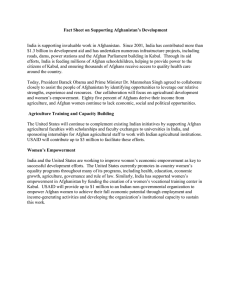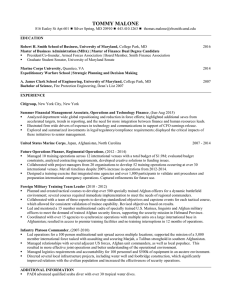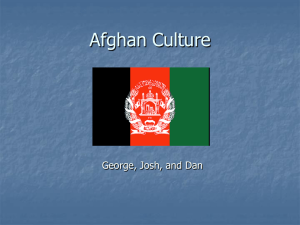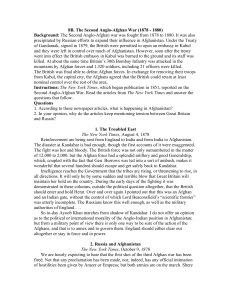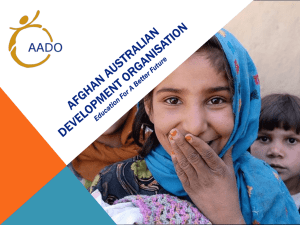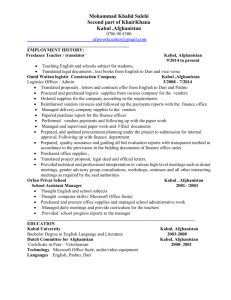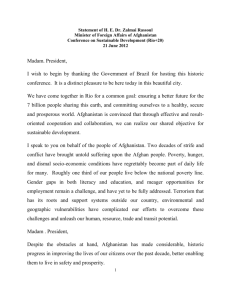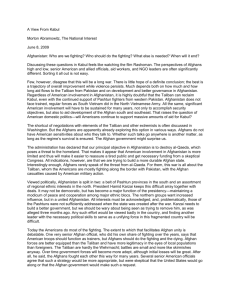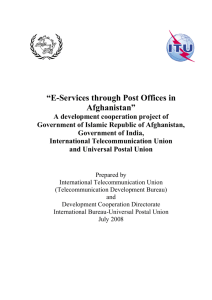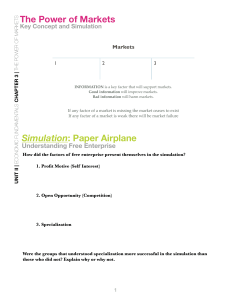USAID Higher Education - Ball State University
advertisement
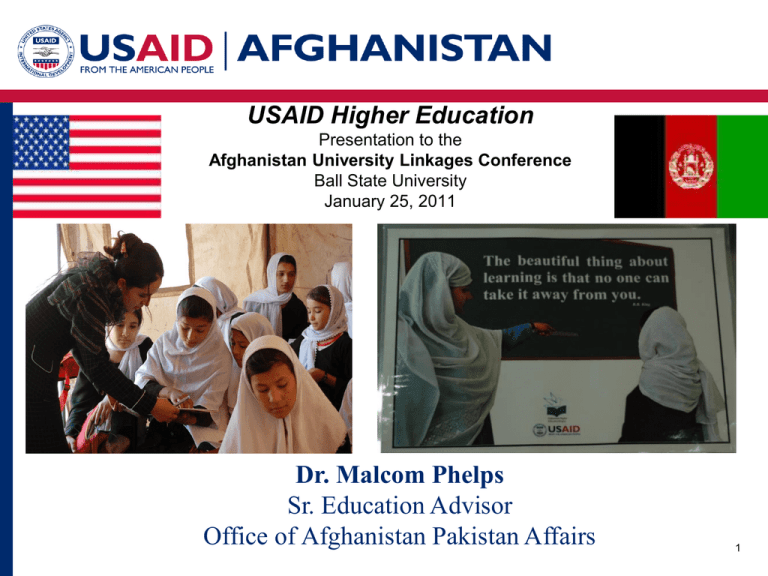
USAID Higher Education Presentation to the Afghanistan University Linkages Conference Ball State University January 25, 2011 Dr. Malcom Phelps Sr. Education Advisor Office of Afghanistan Pakistan Affairs 1 Sensitive But Unclassified (SBU) 2014: Education “Developing Human Capital for Economic Growth” •Qualified scientists, engineers, mathematicians, and technologists available within Afghanistan. •Metric : Percentage of male and female Afghan university graduates hired in positions that support the Afghan government or economy. •Access to primary education services is comparable to other countries in the region. •Metric : Net Enrollment Rate (increased percentage of male and female school-age children enrolled in school.) •Basic literacy skills of male and female students continues to progress. •Metric : Proportion of students who, after two years of schooling, demonstrate sufficient reading fluency and comprehension to “read to learn.” •Increase supply of trained workers to support business and industry. •Metric : The percentage of male and female grade nine graduates who matriculate to a Technical Vocational School. 2 Current Education Portfolio Higher Education is 30% of USAID portfolio; 2nd in world • Improving Quality of University Education – Higher Education Program (HEP) • American University of Afghanistan (AUAf) • Engaging & Preparing Youth for Work – Skills Training for Afghan Youth (STAY) • Increasing Ministries’ Capacity to Deliver Services and to Govern the Education Sector – • Expanding Reach of the Primary School System – • • Partnership for Advancing Community Education in Afghanistan (PACE-A) Textbook Printing Building Workforce Readiness – • Building Education Support Systems for Teachers (BESST) Learning for Community Empowerment Program (LCEP-2) International School of Kabul 3 September2010 Overview - USAID Education USAID’s education program develops the capacity of the Afghan Government to achieve its education goals • Aligned with MOE and MOHE Strategic Plans – NESP2 & NHESP •Aligned with the Afghanistan National Development Strategy (ANDS) and Kabul Conference Recommendations • Investing to increase access to Basic & Higher Education, and Literacy training •Building Afghan capacity in teaching, administration and e-learning. 4 September2010 Afghanistan Higher Education Program (HEP) • TECHNICAL SUPPORT TO THE MINISTRY OF HIGHER EDUCATION •Faculty training •Developing the capacity of over 600 education faculty members in Afghanistan’s 16 four-year teacher education institutions. Training is offered in curriculum and lesson planning, computer literacy, English, natural sciences, and mathematics. To ensure that training will continue after HEP concludes, more than 30 faculty members are now qualified to serve as trainers in these areas. •Standards & Content Development •Faculty members and institutions will participate in the development, adoption and implementation of National Standards for Teacher Education. A comprehensive series of learning experiences, in a range of subjects, will enable faculty members to acquire increased competency in critical pedagogy, subject matter, disciplinary studies and education administration. •Study abroad programs •Sponsoring both short- and long-term study abroad programs to enable faculty members to earn Master’s Degrees in English education and education management; certificates in teaching English as a second language; and further expertise in management, institutional leadership, and institutional planning. •Afghan Master’s •In cooperation with the Ministry of Higher Education, Kabul Education University, and the University of Massachusetts, designed and offering a Master’s of Education (M.Ed) degree program to produce professional university and secondary school educators. 5 Higher Education - Successes • Technical support to MOHE in implementing the NHESP and revitalizing higher education • Developed institutional capacity of MOHE and management capacity of university administrators (scholarships, in-country training) • Supported high-quality teaching, research and professional activities (e-learning, English) • Developed two new Masters degree programs • Increased access to higher education institutions for provincial students by providing a safe living environment in Kabul (dormitories) • Improving pre-service medical education to support the provision of quality health services. 6 6 . Donor Coordination – Education • Support to Human Resource Development Board Secretariat • World Bank - SHEP • Denmark & CERP on school textbooks • Canada & Denmark on MOE’s application to the Fast Track Initiative • EQUIP on teacher education • National Working Level Group on Health & Education (USG & ISAF) 7 Plans Emphasize “Afghanistan first” Assistance to government institutions Normalize assistance Focus country development goals Economic Growth, Agriculture, Energy Coordinate with donors, private sectors US-Afghanistan University Partnerships “Brain Circulation” 8 Plans Goal: Improved ability of university programs to produce workforce with relevant skills to support country development goals by 2015 Increased access to vocational/technical and tertiary education and training for underserved and disadvantaged groups Scholarships Revised admission procedures Improved quality of tertiary education and research in support of country development priorities University partnerships and alliances Centers of excellence affiliated with universities to provide services to and strengthen connection with the private sector Improved relevance and quality of workforce development programs Partnerships with regional and U.S. institutions Industry-recognized skills certification; Career counseling and mentoring 9 Thank You Comments & Questions? Additional questions or information, please contact: Dr. Malcom Phelps (mphelps@usaid.gov) Sr. Education Advisor Afghanistan Pakistan Task Force 10
